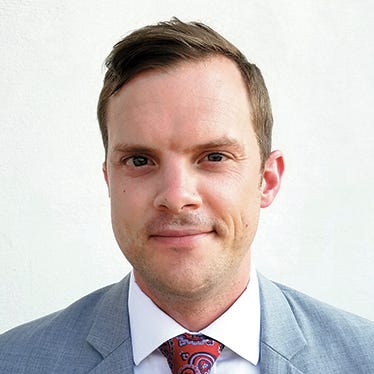Here’s How One Robo Provides Goals-Based PlanningHere’s How One Robo Provides Goals-Based Planning
Developers believe the next iteration of automated financial services is “self-driving money.” Insights from Wealthfront’s engineering blog show that it’s not enough for advisors to skate by on goals-based financial advice and asset allocation—the robos are coming for that, too.

Wealthfront recently explained how they’re designing software, specifically their Path tool, to encroach on a service traditionally offered by financial planners: goals-based advice tied to asset allocation decisions. “The last thing we want to do is recommend you put your money in a low interest savings account when what you need are the long-term returns of an investment account,” writes Harish Thiagarajan on Wealthfront’s engineering blog. “Conversely, we actually do want to recommend putting money in that savings account if you have short-term liquidity needs, such as buying a home in the next year.”
At its most basic, goals-based investing guidance can be reduced to a relationship between three variables, Thiagarajan noted, the money one intends to save, the accounts currently in use, and the goals the user has. “At a high level, the algorithm needs to synthesize these inputs into one coherent output,” he explained.
Once those values are established, the engineering solution separates each goal and calculates the cash flows needed to fund each one. Any extant funds are allocated towards each goal and if there are enough funds to cover the goal (cue the Wealthfront confetti!) no future funds need to be added.
Goals with a gap between the existing funds and the amount needed require a geometric series, or “some fancy math,” to convert each funding deficiency into an annual savings value, which will also vary based on the time the goal needs to be fully funded. All of those savings values are then combined and compared to the amount the user is saving. If all of the goals are receiving adequate funding, the excess funds are applied toward the user’s end goal: retirement. If there’s a shortfall in funding, the savings are allocated relatively evenly across all goals.
After all the goals, and any gaps, are established and the allocations are set, Wealthfront assigns “the most suitable accounts” for each goal and will recommend new accounts “where appropriate,” writes Thiagarajan. All of the savings maps are then merged together into an overall “savings recommendation map.”
Providing a financial services product akin to “self-driving money”—a service financial planners deliver on the daily, or at least are expected to—requires a software test of an “exponential combination of possible inputs and outputs” before it’s ready for use, noted Thiagarajan.
The takeaway, however, is that developers are working on algorithms that will give consumers optimized goals-based planning advice within an intuitive user interface, and, like the robo asset allocators before them, that could either be a threat or a service to human financial advisors.
“We are closer to this future than you might think,” Thiagarajan noted. “When generating extremely personalized advice using a sophisticated algorithm, we need that advice to be spot-on and error-free. In the future, this advice will enable us to achieve our vision to seamlessly route your money to the most appropriate accounts to achieve your goals.”
The robots won’t let up.







